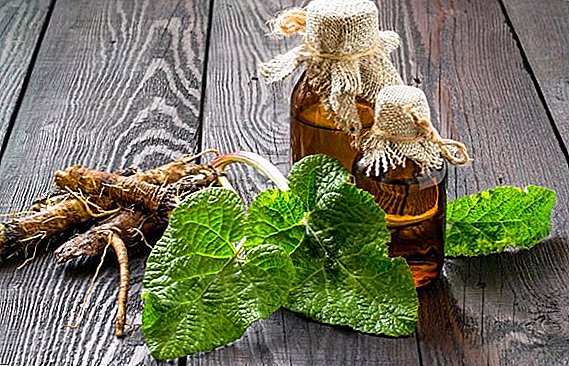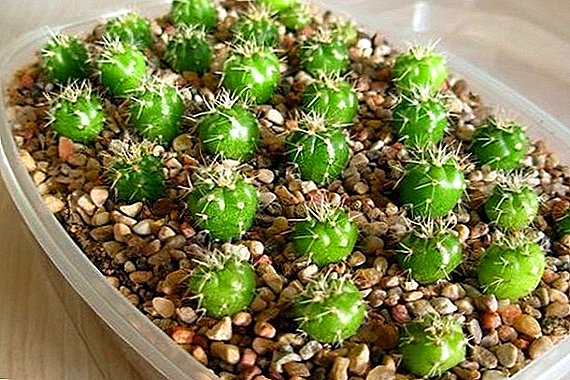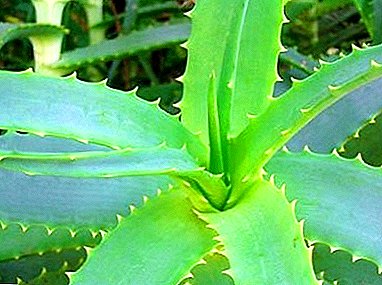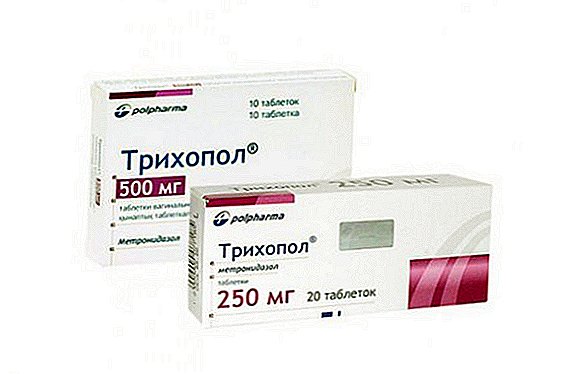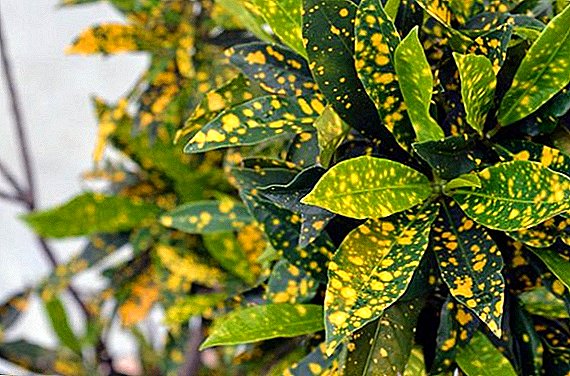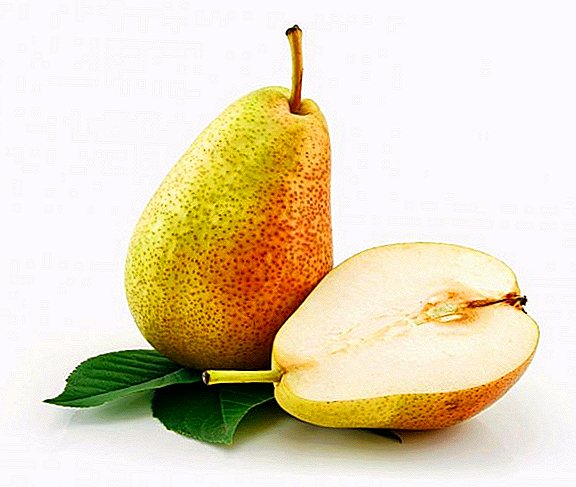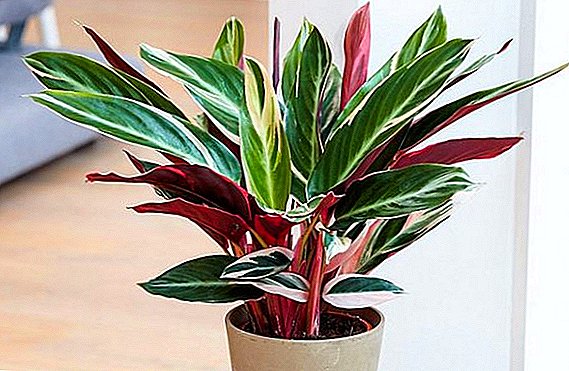 An exotic plant, the stromant, has come to us from the tropics of South America, it grows in the lower tier of the Amazon rain forest. The herbaceous perennial belongs to the family of maranths and attracts attention due to its unusual color and shape of the leaves. During the day, they are always turned toward the sun, and at night they rush upwards. She is often confused with calathea. In nature, the plant can reach up to one meter in height.
An exotic plant, the stromant, has come to us from the tropics of South America, it grows in the lower tier of the Amazon rain forest. The herbaceous perennial belongs to the family of maranths and attracts attention due to its unusual color and shape of the leaves. During the day, they are always turned toward the sun, and at night they rush upwards. She is often confused with calathea. In nature, the plant can reach up to one meter in height.
Optimal conditions for growing
Since the stromante does not belong to plants from our latitudes and grows in nature in a completely different climatic zone, it requires special conditions.
Lighting
The main advantage of a houseplant is its leaves, therefore the choice of lighting is very important in caring for this flower. Optimal western and eastern windows. If it is located on the south side, shading is necessary, and if it is on the north side - additional lighting. Highlighting stromals in winter is a prerequisite.

Temperature
Temperature range below 18 ° C is fraught with overcooling of the root system, which can lead to the death of the plant. In this regard, in winter it is necessary to carefully monitor the temperature and maintain it at a level of 20-22 ° C, in the summer optimally 22-27 ° C
Important! Avoid drafts and sudden changes in temperature. Be careful with airing!
Features care for stromanta at home
Stromanta is considered quite fastidious plant for growing at home, usually it is preferred by experienced growers. However, if you decide to make this beauty at home, read the following recommendations.
Watering
Very stromanta sensitive to moisture levels. For her, both excessive watering and inadequate are detrimental. Watering is necessary only after the top layer of soil dries. Use filtered water. Plants of the family matrandy not tolerate the presence of mineral salts and lime.
Air humidity
An important indicator for stromals in caring at home is the humidity of the air, since its homeland is the tropics.
Did you know? Rainfall in tropical forests reaches 7,000 mm per year, which is almost 10 times the level of our latitudes.

It is rather difficult to maintain the moisture content of 70-90% necessary for stromanthans, sometimes even daily spraying is not enough. The ideal would be the presence of a humidifier. You can install the stromante in a pan with water on a layer of expanded clay or other drainage so that water does not touch the bottom of the pot.
Top dressing
Fertilizers are applied during the period of active growth, from May to August. Stromante suitable complex liquid fertilizer for deciduous plants, it is recommended to make once every two weeks, it is desirable to pre-dilute with water 1: 2.
With their beauty they attract the eye of an orchid: tselogin, phalaenopsis, cymbidium, venerina shoes, dendrobium, black orchid, ludizia, and blille.
Bloom stromancy
As a flowering plant, it is of no interest, because the blooming of the stromant is white nondescript flowers, besides at home rarelyand it is almost impossible to achieve. Inflorescences are collected in panicles with a diameter of about 7 cm on long peduncles.
Transplant rules: pot and soil
Stromant transplantation carried out in the spring. Mature plants are transplanted once every 3-4 years, while young ones need annual transplantation. Stromants are transplanted by way of transfer from an old pot to a new one, keeping an earthen clod around the roots.
Important! Perform annual soil renewal in adult plants by replacing the top layer of the earth (2-3 cm).As the soil suitable mix for maranth or substrate "Palma". It is possible to prepare the soil for the stromans independently, proceeding from their such proportions:
- 2-3 shares of leafy ground;
- 1 share of humus;
- 1 share of peat;
- 1 share of sand.
Breeding methods Stromant
Despite the difficulties in cultivation and care, the stromant can be propagated at home in two ways.
Dividing bush
In this way, multiply the plant during spring transplantation, carefully dividing it into several parts. Plant parts of the flower in the substrate and pour water abundantly. For better rooting, delenki cover film, creating a greenhouse effect.
Apical cuttings

This method is also suitable for stromals, the reproduction of the apical cuttings is recommended in spring or summer. The flower is cut stem 10 cm long with several leaves. The stalk is put into the water and covered with a film. After about 6 weeks, the roots appear, and the plant can be transplanted into the soil with a high content of peat.
Pests, diseases and other problems in the cultivation of stromants
Marantovy are considered very capricious and fastidious indoor plants, they are often susceptible to various diseases. If the leaves dry, then first of all it means that the stromanthans have a lack of moisture due to the low humidity in the room.
Beautiful decorative leaves can also boast: sansevieria, yucca, ivy, peperomiya, dracaena, ficus, croton, palm tree, scyndusus, fern, chlorophytum, sheflera, fittonia.
However, these may also be signs of the presence of a spider mite in a plant. In this case, the leaves must be wiped with a weak soap solution and arrange flower abundant shower. If the leaves have lost color and become pale before drying, the lighting is too intense for the plant, shading is necessary.
Many flower growers wonder why leaves and stromata curl and sometimes become stained. This is due to improper watering. Moreover, both insufficient and excessive watering affect the flower in this way.

In addition to the spider mites, which were mentioned earlier, the stromals are susceptible to thrips, powdery worms, whiteflies and shields. Spider mites, thrips, and whitefly are destroyed by Aktellik. Ampoule of the drug is diluted in one liter of water and spray the affected plant.
You can get rid of aphids with the help of Fitoverma. And from the powdery worm helps such a tool: 1 tsp. grated soap dissolve in a liter of water and add 2 tsp. vodka. Irrigate the flower with a solution 2-3 times (until the pest disappears) at an interval of a week. It is better to cover the soil with a film in order to avoid soap solution getting into it.
Stromant species
Among florists, such species as the stromante pleasant and blood-red became the most popular.
Stromanta pleasant, or Stromanthe amabilis, reaches a height of 30 cm. The leaves are wide and oval, on long petioles, usually 10-20 cm long and about 4-5 cm wide. The leaves have a herringbone pattern on top - on a light green background green divergent stripes.

Blood red stromanta, or Stromanthe sanguinea, originally from Brazil. This flower is bigger. Pointed leaves can reach a length of 30-40 cm, and a width of 13 cm. The stromante of this species has the following features: the leaves are more contrasting from above and have a glossy shine. Bottom, they are painted in bright pink color. Most popular varieties this type of stromancy:
- Triostar (tricolor) - the most famous and popular variety. On the outer dark green side of the leaves there is a scattered pattern of light green, white and pinkish streaks, the lower part of the leaves is colored maroon.
- Maroon - leaves of deep green color, in the center passes a lime strip, the bottom side has a burgundy color.
- Hortikolor - on top of the leaf has olive, green and yellow shades, the underside is dark red.
- Multicolor - on top of the leaf plate is dark green with white and light green divorces, and below it is red-maroon.




Did you know? Maroon (maroon) in translation from English means maroon color. This feature is inherent in the reverse side of the leaves for all varieties of this type of stromans.These recommendations will greatly facilitate the care of the flower and help to avoid many diseases, making your stromant a real home decoration.


